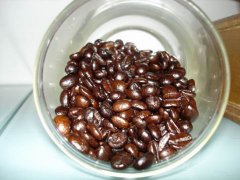The method of making black coffee
There are three ways to make black coffee, so there are three different types of coffee pots: traditional follicle type, siphon type and electric type.
The traditional follicle style is the most primitive and the simplest way to do it. The coffee pot is composed of a funnel, a piece of filter paper and a container below, but it requires high manual craftsmanship. If you handle it properly, you can make delicious coffee with a mellow taste. The price of this kind of pot is so cheap that you can buy it for more than ten yuan. The follicular coffee pot is suitable for coffee tasters with stable handle and keen taste. When buying follicular coffee utensils, pay attention to whether it is three holes or one hole, which is very important. The dripping speed of three holes is faster, the extraction time is short, the coffee is lighter, and the opposite is true for one hole.
Siphon type uses the siphon principle, under the combustion of alcohol, when the water temperature in the lower container reaches 92 degrees Celsius, the water is sucked into the upper container with coffee powder, and after soaking and stirring, the coffee is returned. Due to the addition of a mixing process, this method of black coffee has a strong flavor, but because it does not need to rely on manual technology, the practice is relatively simple. The market price of this kind of coffee pot is mostly one or two hundred yuan.
The price of an electric coffee maker is comparable to that of a siphon coffee maker, which boils the water and soaks it through electricity. It is the easiest way to make black coffee, but it tastes a little worse because it is made from boiling water. In contrast, electric coffee pots are more suitable for young people who are petty bourgeoisie and afraid of trouble. The prices of common electric coffee makers range from one hundred yuan to three or five hundred yuan. Although the traditional follicle style is the simplest, it is the coffee pot that can best brew the original flavor of coffee. In the production process, it is necessary to accurately grasp the water temperature, water flow size and trajectory. A uniform flow and a round track can make the coffee taste natural, so the choice of the kettle and the control of pouring water with both hands are very important. When the water comes into contact with the coffee, it should be kept round as far as possible, from the outside to the inside, from the inside to the outside, so that the coffee is in full contact with the current. At the same time, the water temperature of 92 degrees Celsius can make the coffee fragrant, mellow, sweet, sour, bitter uniform and strong, too high water temperature will scald the coffee, making the taste sour and astringent; if it is too low, it is difficult to brew the aroma of the coffee.
Important Notice :
前街咖啡 FrontStreet Coffee has moved to new addredd:
FrontStreet Coffee Address: 315,Donghua East Road,GuangZhou
Tel:020 38364473
- Prev

Heating freshly ground coffee with alcohol lamp
- Next

How to make espresso with all kinds of coffee machines
What do you mean to make coffee? Of course, it is not to boil the coffee beans in boiling water, in that case, you will only get a cup of scorched bitter water, which tastes bitter and astringent, so how can you enjoy the fragrance of the coffee? People who pay attention to enjoying life love to buy a coffee machine to go home and cook and sigh, but not many people really know how to cook. Back to the point, pay attention to a few questions before making coffee: make sure you want the coffee mill.
Related
- Beginners will see the "Coffee pull flower" guide!
- What is the difference between ice blog purified milk and ordinary milk coffee?
- Why is the Philippines the largest producer of crops in Liberia?
- For coffee extraction, should the fine powder be retained?
- How does extracted espresso fill pressed powder? How much strength does it take to press the powder?
- How to make jasmine cold extract coffee? Is the jasmine + latte good?
- Will this little toy really make the coffee taste better? How does Lily Drip affect coffee extraction?
- Will the action of slapping the filter cup also affect coffee extraction?
- What's the difference between powder-to-water ratio and powder-to-liquid ratio?
- What is the Ethiopian local species? What does it have to do with Heirloom native species?

